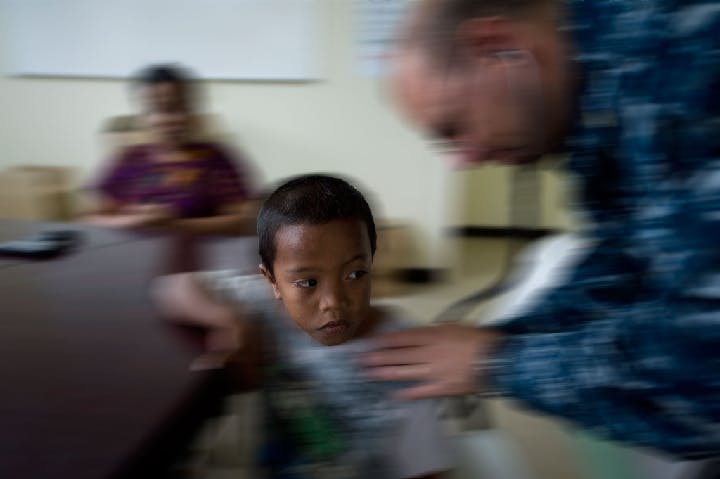The tragic confusion of adoption from the Marshall Islands
– Elizabeth Peet
For Marshall Islanders in the United States, cultural misunderstandings have curdled into exploitation, raising difficult questions about America’s immigration and integration policies.
A small city tucked into the northwest corner of Arkansas seems an unlikely setting for a major immigration debate. But as the adopted home of more than 4,000 immigrants from the Marshall Islands, the city of Springdale, Arkansas, has won the limelight for all the wrong reasons. A recent investigative report by Kathryn Joyce of the New Republic delves into the complexities of America’s inbound immigration from the Marshall Islands, asking vital yet awkward questions about deep, persistent cultural misunderstandings, and the efficacy of American integration of immigrants.
America’s relationship with the Marshall Islands is rooted in controversy. During the Cold War, the small Pacific archipelago became a testing site for America’s growing nuclear arsenal. Between 1946–1958, a total of 67 nuclear tests were conducted at the islands, one of which — the famed Castle Bravo test of March 1954 — released nearly thirty times more radioactive iodine than the 2011 Fukushima and 1986 Chernobyl leaks combined. An ABC News documentary produced in 1990 outlined the devastating impact of nuclear tests on the health of the Marshallese people. Even today, radiation levels render many of the islands uninhabitable, while stillbirths and miscarriages are disproportionately high, and childhood illnesses, cancers, and blood conditions are commonplace.
As reparation, the United States has awarded financial compensation and opened its borders to Marshallese immigrants, who are able to live and work in the U.S. without a visa under the 1986 Compact of Free Association. Perhaps as much as one-third of the total Marshallese population has taken advantage of this compact and relocated to the States, lured by the promise of America’s education and healthcare systems. As the hometown of Tyson Foods — a known and trusted employer in the Marshall Islands — Springdale, Arkansas is a major destination for these immigrants. There, jobs and a sense of community is easily within reach. Less attainable is integration into American society; culturally, the Marshallese people have either been misunderstood or rejected, with tragic consequences.
All is reflected by a look at the murky world of Marshallese adoption. The surge in international adoption in the 1990s — coupled with relaxed visa regulations that eased the ability to bring babies into the U.S. — led hundreds of American families to adopt Marshallese babies, a “startling outflow of the nation’s offspring,” writes Joyce. But the ethics of U.S. adoption of Marshallese babies is fraught.
In 2001, Jini Roby, a professor of social work at Brigham Young University, conducted a survey of Marshallese mothers whose biological children were adopted. It yielded troubling results: 87 percent of the mothers interviewed believed that their children would return home once they reached age 18; 70 percent of the parents believed their children could come home if the adoptions did not work out. According to Roby, “if they had known otherwise, the mothers said, they would not have agreed to give up their child.” Fourteen years later, this misunderstanding festers. Joyce interviewed a woman in Arkansas who gave her child up for adoption in July 2014. The woman had signed legal papers in English, which she could not read or understand, and was distraught to realize that under the U.S.’s closed adoption system, it was likely she would never see her child again.
The root of the problem seems to lie in a clash of cultures. In Marshallese tradition, children are often raised by people other than their biological parents — family friends or relatives who volunteered to take the burden away from what are often already large families. This type of ‘adoption’ is more informal, as mothers retain contact with their children and are able to see them whenever they wish. When Marshallese parents move to the U.S., they are confronted with a rigid and formal system of closed adoption, wherein adoptive parents often take the child far away and raise it as their own.
Why does this cultural misunderstanding continue unabated? The sad answer is that adoption is, simply put, a lucrative business. In the 1990s, adoption agencies would fly pregnant Marshallese mothers to Hawaii, heaping promises of a college education and a new life in America if they gave up their babies. Concerns about the legality of all this led Hawaii to tighten its adoption laws. The adoptions didn’t end, they just simply moved to states with looser adoption laws — states like Arkansas. For everyone but the mothers, it’s a cashgrab. Lawyers who execute adoption paperwork can make up to $13,500 per baby, while Marshallese recruiters who woo mothers to give up their children can take home a commission of up to $2,500 per case.
The Marshall Islands Adoption Act of 2002 made it illegal to solicit a baby for adoption through financial incentive, and adoption brokers have grown accustomed to threats of prosecution if they’re caught recruiting pregnant Marshallese women. In reality, it is difficult to enforce these rules in international adoption, an intrinsically private and closed-off world.
Some have spoken out, uttering words that few dare to say, at least publicly. “Many observers,” writes Joyce, “including some of the adoption brokers and attorneys themselves — just call all this moving of bodies what it looks like: human trafficking.”
* * *
The Source: Kathryn Joyce, “Do you understand that your baby goes away and never comes back?” New Republic, May 2015.
Photo courtesy of the U.S. Navy
